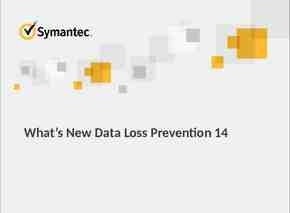OMICS Journals are welcoming Submissions OMICS International welcomes
28 Slides1.10 MB

OMICS Journals are welcoming Submissions OMICS International welcomes submissions that are original and technically so as to serve both the developing world and developed countries in the best possible way. OMICS Journals are poised in excellence by publishing high quality research. OMICS International follows an Editorial Manager System peer review process and boasts of a strong and active editorial board. Editors and reviewers are experts in their field and provide anonymous, unbiased and detailed reviews of all submissions. The journal gives the options of multiple language translations for all the articles and all archived articles are available in HTML, XML, PDF and audio formats. Also, all the published articles are archived in repositories and indexing services like DOAJ, CAS, Google Scholar, Scientific Commons, Index Copernicus, EBSCO, HINARI and GALE. For more details please visit our website: http://omicsonline.org/Submitmanuscript.php

Clinical Pharmacology & Biopharmaceuticals Introduction to Clinical Pharmacology Ioan Magyar Ph.D, M.D. Assoc. Professor of Basic & Clinical Pharmacology Faculty of Medicine & Pharmacy University of Oradea Romania E-mail: magyar [email protected] MobilPhone: 40754/049840

Summary Definitions The aims and goals of Clinical Pharmacology History of Clinical Pharmacology Clinical trials. IND & NDA Methods of Clinical Pharmacology Clinical Pharmacology in Romania

Definitions Clinical pharmacology can be defined as the study of drugs in humans. Clinical pharmacology is a relatively new science. It is related to pharmacotherapy but is not the same science. Clinical pharmacology has been termed a bridging discipline because it links classical pharmacology with clinical medicine. Clinical pharmacology is a science about drugs. It is closley linked to fundamental pharmacology.

Aims of Pharmacology (Basic & Clinical) The fundamental problemes with which pharmacology is concerned are following: 1). The relationship between dose and biological effect; 2). The localization of the site of action of a drug; 3). The mechanism (s) of action of drug; 4). The absorption, distribution, metabolism, and excretion of a drug (PK); 5). The relationship between chemical structure and biological activity;

The aims and goals of Clinical Pharmacology Clinical pharmacologists are concerned both: I. Optimal use of existing medications; II. Scientific study of drugs in humans; The latter area include both evaluation of: 1).The safety and efficacy of currently available drugs; 2). Development of new and improved pharmacotherapy (this is the main goal of Clinical Pharmacology); The newly available drugs must be safety and efficacy too;

History A few personalities had an significantly influence on clinical pharmacology development: Rudolph Bucheim (1820-1879) has been credited with establishing pharmacology as a laboratory-based discipline. In the United States, Harry Gold and Walter Modell began in the 1930′s to provide the foundation for the modern discipline of clinical pharmacology. They inovated (invention) of the double-blind design for clinical trials and the use of effect kinetics to measure the absolute bioavailability of digoxin.

A great challange for the pharmacologists and physicians was adverse drug reaction (ADR) to thalidomide – an inofensive anxiolytic and antivomiting drug ; Few drugs have focused as much public attention on problem of ADRs as did thalidomide, which was first linked in 1961 to catastrophic outbreaks of phocomelia by Lenz in Germany and McBride in Australia.

The thalidomide tragedy provided an major impetus for developing a number of NIH-funded academic centers of excellence of clinical pharmacology. NIH National Institutes of Health FDA Food and Drug Administration In 1932, Paul Martini published a monograph: Methodology of Therapeutic Investigation, that summarized his experience in drug evaluation and probably entitles him to be considered the first clinical pharmacologist .

Martini described the use of placebos, control groups, stratification, rating scales, and the n of 1 trial design, and emphasized the need to estimate the adequacy of sample size and to establish baseline conditions before beginning a trial. He also introduced the term clinical pharmacology . More recently, Sheiner outlined a number of improvements that continue to be needed in the use of statistical methods for drug evaluation, and asserted that clinicians must regain control over clinical trials;

Contemporary drug development is a complex process that is conventionally divided into preclinical research and a number of clinical development phases; A following figure illustrate these two main steps: I.Preclinical Development II.Clinical Development

Less than 1/3 of the drugs tested in clinical research – in the marketplace; A good clinical trial requires multidisciplinary perssonel: 1). Basic scientists 2). Clinical pharmacologists 3). Clinician specialists 4). Statisticians

Methods of Clinical Pharmacology To avoid some errors in clinical trials some methods are used: 1). Crossover design – alternating of test drug with placebo and standard drug; Placebo response from Latin,I shall please; Placebo respons is a positive way of therapeutic result;

In clinical trials placebo an inert form with the same properties of the tested drug (odor, consistency); To eliminate this phenomen (placebo response) we can use: 2). Single-blind design or 3). Double –blind design In the last design – only a third person know about testing drug (with the special code);

Clinical trials. IND & NDA Once a drug is judget ready to be studied in humans, a Notice of Claimed Investigational Exemption for a New Drug (IND) must be filed with the FDA; The IND includes: 1).Information on the composition and source of the drug; 2). Manufacturing information; 3). All data from animal studies; 4). Clinical plans and protocols; 5). The names and credentials of physicians who will conduct the clinical trials.

Its often requires 4-6 years of clinical testing; The volunteers or patients must be informed; Phase 1 The drug is studied in 20-80 healthy volunteers; In this phase the trial is open – investigators and subjects know what is being given; Its evaluated toxicity, PK profile of the drug; Phase 1 studies its performed by the clinical pharmacologists – in research centres;

Phase 2 In this phase testing drug is evaluated in patients; The goal – to determine efficacy of the drug; A small number (100-200) of patients – is evaluated in great detail; A single-blind design is used with placebo and an older active drug (to compare); The ADRs (drug toxicity) might also detected in this phase; Phase 2 of trials are done in clinical centres (university hospitals);

Phase 3 The drug is evaluated in much larger numbers of patients (thousands) to further establish safety and efficacy; Using information gathered in phases 1 and 2, phase 3 trials are designed to minimize errors caused by placebo effects, variable course of disease, etc.; Therefore, double-blind and crossover techniques are frequently used; Phase 3 studies can be difficult to design and execute;

Are usually expensive because a large numbers of patients involved and the masses of data that must be collected and analyzed; The investigators are usually specialists in the disease being treated; Certain toxic effects (caused by immunologic processes) may be first become apparent in phase 3; If phase 3 results meet expectations, application will be made for permission to market the new agent.

The process of applying for marketing approval requires submission of a New Drug Application (NDA) to the FDA; The FDA review this material and a decision on approval may take 3 years or longer; In cases where an urgent need is percieved (eg, cancer chemotherapy), the process of preclinical and clinical testing and FDA review may be greatly accelerated; For serious diseases, the FDA may permit extensive but controlled marketing of a new drug before phase 3 studies are completed;

Clinical Pharmacology in Romania Clinical Pharmacology is a new discipline in the university curricula in Romania (it was introduced as a distinct branch of pharmacology in 2000 year); The NAMMD (National Medicines Agency and Medical Devices) is the Romanian competent authority in the field of medicinal products for human use, as regards marketing authorisation, surveillance of the safety of medicinal products in therapeutic use, authorisation of clinical trials and issuance of regulations in the medicinal product field, as approved by the Ministry of Health;

References Katzung, Bertram G.: Basic & Clinical Pharmacology, Tenth Edition, Mc Graw Hill, 2007. Arthur J. Atkinson, Jr., Darrell R. Abernethy, Charles E. Daniels, Robert L. Dedrick, Sanford P. Markey: Principles of Clinical Pharmacology, Second Edition, Elsevier 2007. Barton L. Cobert, Perre Biron: Pharmacovigilance form A to Z, Balckwell Science 2002. Laurence L. Brunton, John S. Lazo, Keith L. Parker: Goodman & Gilman's, The pharmacological basis of therapeutics, Eleventh Edition, Mc Graw Hill, 2006. http://www.anm.ro/anmdm/

Clinical Pharmacology & Biopharmaceutics Related Journals Clinical & Experimental Pharmacology Pharmaceutical Care & Health Systems Journal of Developing Drugs

For more details on conferences related to Clinical Pharmacology & Biopharmaceutics Journal please visit the link given below http://www.pharmaceuticalconferences.com/

OMICS International Open Access Membership Open Access Membership with OMICS International enables academic and research institutions, funders and corporations to actively encourage open access in scholarly communication and the dissemination of research published by their authors. For more details and benefits, click on the link below: http://omicsonline.org/membership.php









